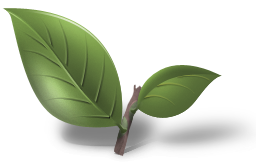Staffordshire redware teapots
-
WhisperingFrog192
- Posts: 54
- Joined: Fri Nov 04, 2022 9:38 pm
Hello! I recently came into possession of a very old teapot, a Staffordshire redware teapot probably dated to around the middle-1700s. It's unglazed and from what I read was used to drink Wuyi teas before both Wuyi and unglazed teaware in general fell out of fashion during the 1800s. Does anybody have any experience with these? Would it be safe to brew tea in one? Thanks!
- Attachments
-
- PXL_20221102_224614115.jpg (234.1 KiB) Viewed 15273 times
-
WhisperingFrog192
- Posts: 54
- Joined: Fri Nov 04, 2022 9:38 pm
That’s a lovely pot. I don’t have a sense of scale from the photos: how much does it hold? Wondering here how it fits with the Asian tradition of smaller pots vs larger pots intended for western style/single infusion brewing for multiple people at once.
-
WhisperingFrog192
- Posts: 54
- Joined: Fri Nov 04, 2022 9:38 pm
I measured it at around 280ml.
Not so small, if you look at other earlier Chinese imitation porcelain, or the Export-Porcelain from China itself. I think the larger sizes came a bit later when Western pottery let go of the imitation phase and created more original things.
In addition: You can very well serve multiple persons with Chinese style small pots. Either with a reduced cup size or by stacking (which is often done actually, when the numbers of guests exceeds 3-5). Stacking is not ideal in terms of preserving original flavour layers, but then so is serving to more than 3 people (in terms of appreciation of the tea itself).
Very small in terms of the modern western teapot styles that I encountered on other people’s counters and shelves, or in shops. To the best of my knowledge, we never had one in our house until dad started drinking tea with his calligraphy friends.
It’s interesting to put that together with other information from topics about tea in history here and elsewhere, to consider what tea people were preparing in those vessels, and how they were sharing it.
It’s interesting to put that together with other information from topics about tea in history here and elsewhere, to consider what tea people were preparing in those vessels, and how they were sharing it.
-
polezaivsani
- Posts: 195
- Joined: Sun Oct 06, 2019 4:43 pm
- Location: bloody Russia
Pardon me some frolic, but is it Phoenix in the center of the relief by any chance? Could it be an elaborate budge for you to dedicate the pot to dan congs? A more picturesque version of 'Please, drink Chinese wulong'.
Pot looks too large and porous for Dancong... would be very expensive and ultimately dissatisying choicepolezaivsani wrote: ↑Fri Feb 17, 2023 6:41 pmPardon me some frolic, but is it Phoenix in the center of the relief by any chance? Could it be an elaborate budge for you to dedicate the pot to dan congs? A more picturesque version of 'Please, drink Chinese wulong'.
-
WhisperingFrog192
- Posts: 54
- Joined: Fri Nov 04, 2022 9:38 pm
I believe it's actually a cockatrice! I've mostly been devoting it to yancha because that's what I've read these pots were used for originally, but I think dan cong would work pretty well, too.polezaivsani wrote: ↑Fri Feb 17, 2023 6:41 pmPardon me some frolic, but is it Phoenix in the center of the relief by any chance? Could it be an elaborate budge for you to dedicate the pot to dan congs? A more picturesque version of 'Please, drink Chinese wulong'.
-
WhisperingFrog192
- Posts: 54
- Joined: Fri Nov 04, 2022 9:38 pm
I dunno how porous it is, actually! It seems higher-fired than some of my underfired yixing pieces, and all the resources I've read refer to it as 'stoneware' rather than earthenware. I know a lot of the Elers brothers pieces were compared pretty favorably to import Yixing of the era by sources of the time, though this is ~50 years later than them.Bok wrote: ↑Fri Feb 17, 2023 7:03 pmPot looks too large and porous for Dancong... would be very expensive and ultimately dissatisying choicepolezaivsani wrote: ↑Fri Feb 17, 2023 6:41 pmPardon me some frolic, but is it Phoenix in the center of the relief by any chance? Could it be an elaborate budge for you to dedicate the pot to dan congs? A more picturesque version of 'Please, drink Chinese wulong'.
